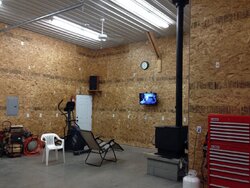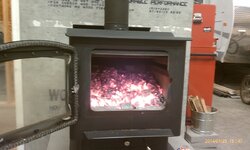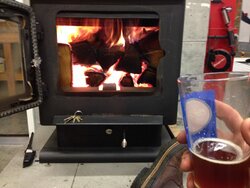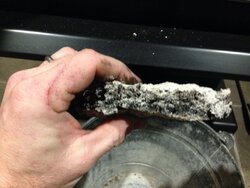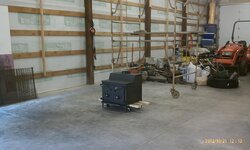Softwoods coal up too. It really comes down to trying to make an undersized stove work to keep you warm. It is easy to avoid coaling if you can loaf your stove along at low temps and ride out the cool parts of the cycle. When you need to run your stove at high output, you will have to deal with the coals somehow. Methods on how to reduce coals is what this thread is about, the man needs heat.
I too have an NC30 like the OP and I certainly try to maintain 700 degree temps in an effort to maximize output. I'm burning 100% softwoods and can tell you that softwoods make plenty of coals when you are trying to burn a stove hot.
Pellet stoves don't coal up. Buy a big enough pellet stove and run it hard.
No loafing here in this weather. The guy asked for remedies for coaling issues, I gave him some. I have both hard and soft woods, burn both as situations call for. Soft wood does coal, especially if your constantly throwing splits on an already establish burn( any wood will), and impatient to letting the existing load burn down. That is the nature of that beast. But, soft wood coaling does not compare to hard wood coaling, unless your loading that stove a lot, or the wood is not as dry as maybe it should be, which appears that is not his issue.
I have no issues with coals when throwing poplar or pine in to get heat, less coals for the soft wood, and also burn down the coals from the oak I burn from the previous full load. Works quite well for me, so I offered input to the question asked.
If your trying to keep the stove at a constant 700, you might as well use another source for heat, pellets being a good suggestion, but if he wanted a pellet stove, he would have bought such.
Wood burning is an art, and he will hone his skills as he burns more seasons, and I bet he will also find he has less issues with coaling as he hones his burning skills.
As limited as the real time and skill involved to operate a stove, there is still technique involved, which also evolves over the course of a few seasons. This is as important as any other aspect of wood burning.
Some may find it impractical to run a shop stove constantly at 700 with what realistic time is spent in a shop. But to each their own, and everyone has their own needs & wants.
I have offered my input of what has been working for me. May or may not work for others, but saying go get a big pellet stove is not addressing the issue he is having with his wood burning stove that is in place.
Again, I suggest some folks burning habits or technique is not as sound as they may think.





